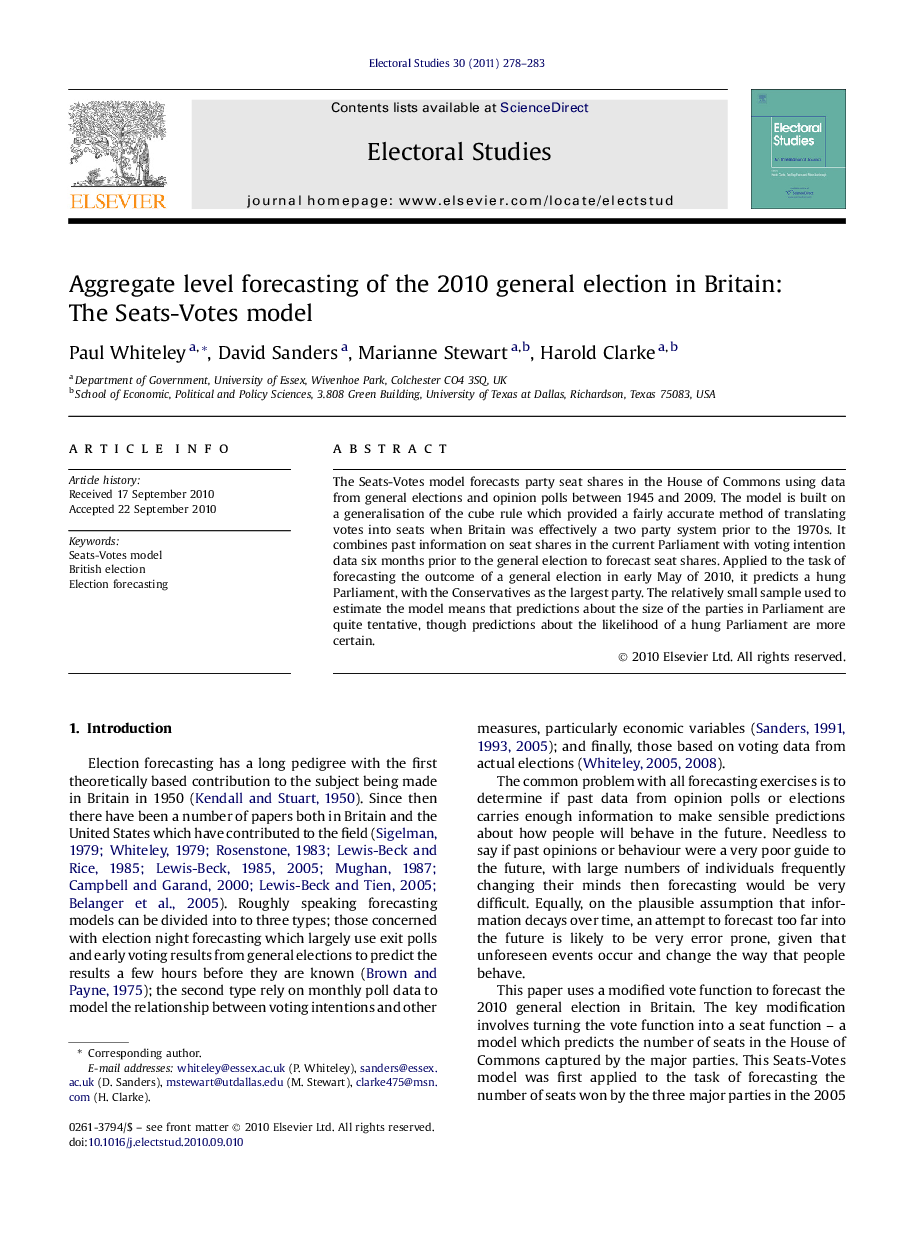| Article ID | Journal | Published Year | Pages | File Type |
|---|---|---|---|---|
| 1052041 | Electoral Studies | 2011 | 6 Pages |
The Seats-Votes model forecasts party seat shares in the House of Commons using data from general elections and opinion polls between 1945 and 2009. The model is built on a generalisation of the cube rule which provided a fairly accurate method of translating votes into seats when Britain was effectively a two party system prior to the 1970s. It combines past information on seat shares in the current Parliament with voting intention data six months prior to the general election to forecast seat shares. Applied to the task of forecasting the outcome of a general election in early May of 2010, it predicts a hung Parliament, with the Conservatives as the largest party. The relatively small sample used to estimate the model means that predictions about the size of the parties in Parliament are quite tentative, though predictions about the likelihood of a hung Parliament are more certain.
